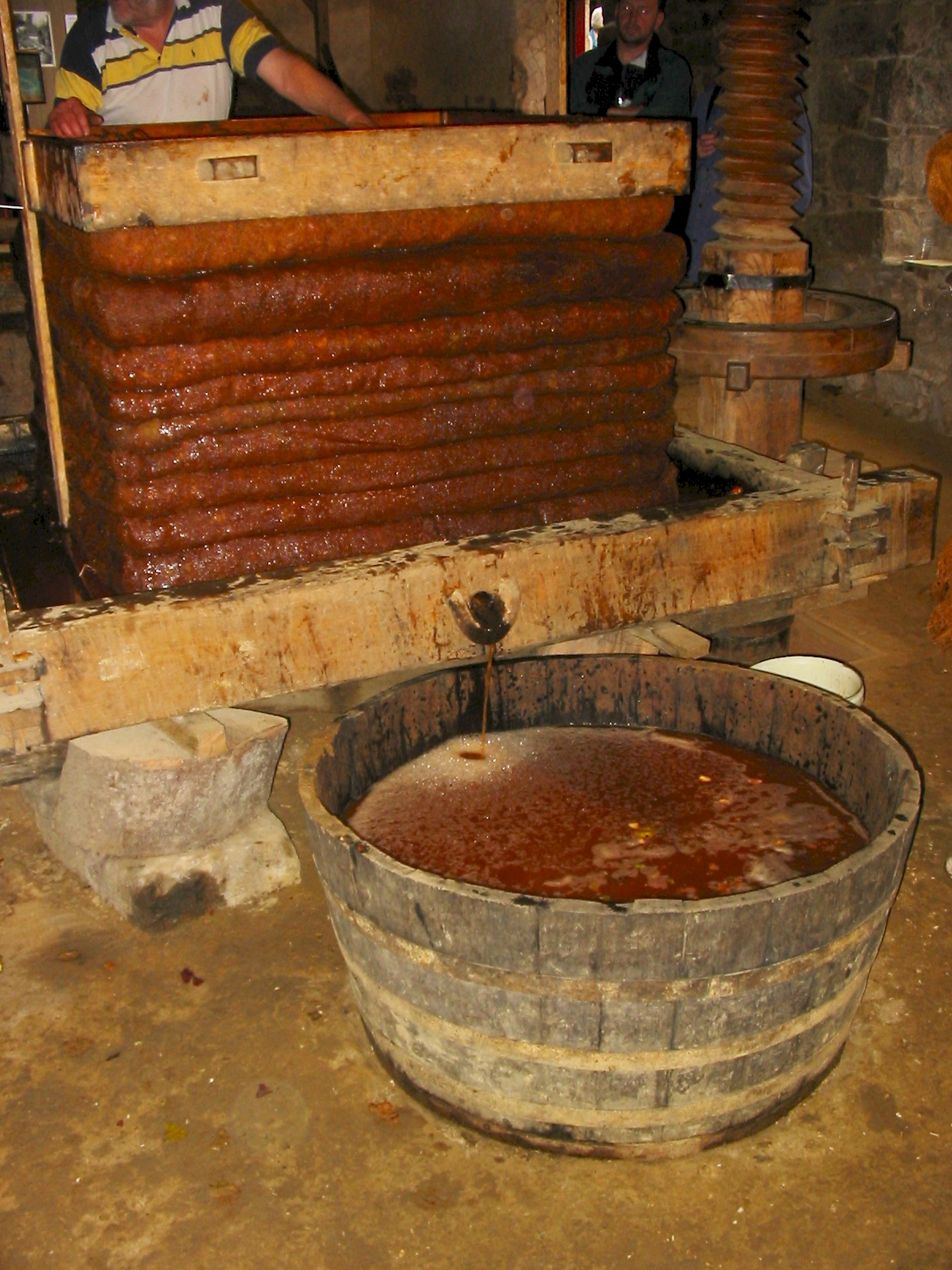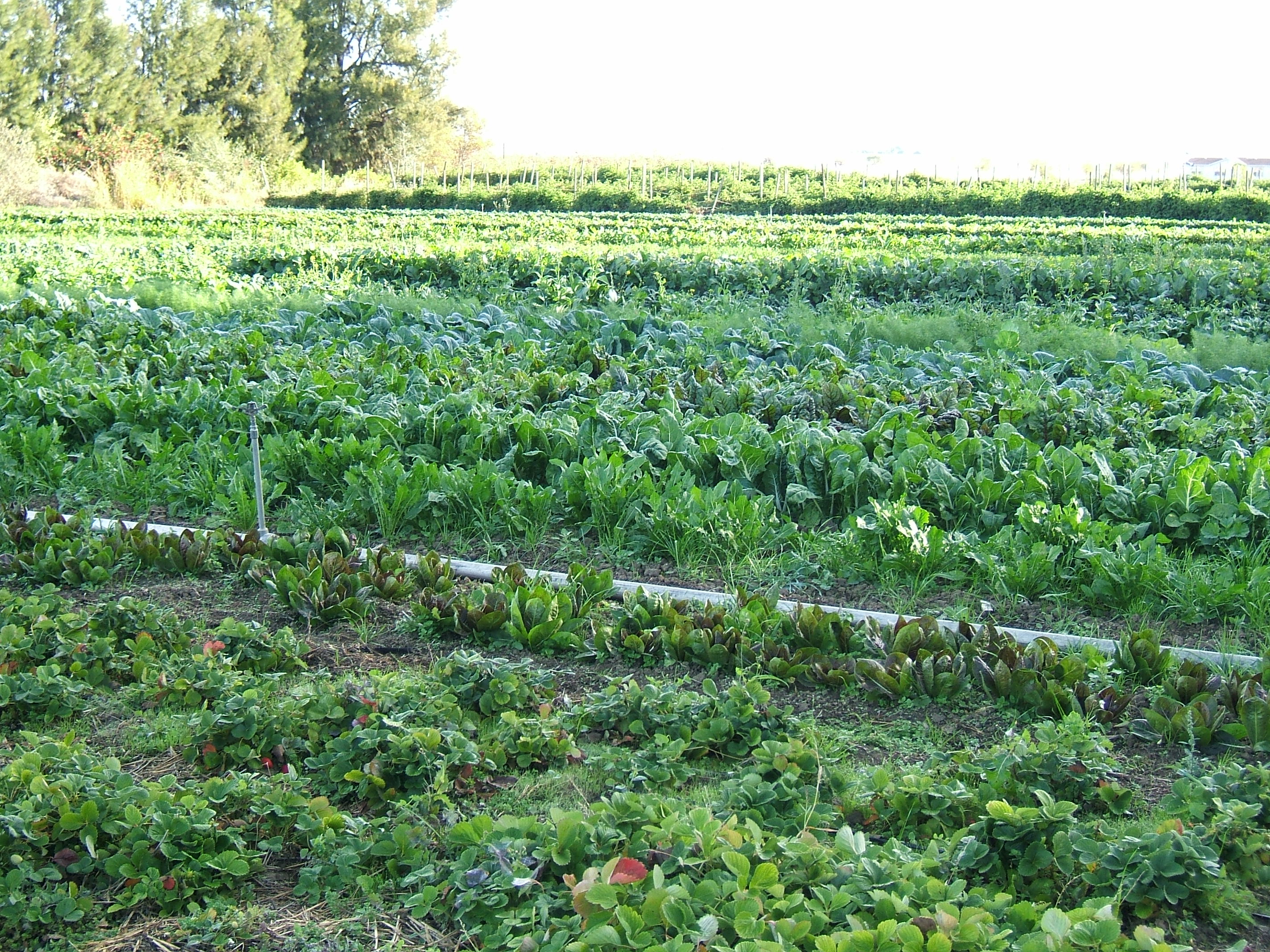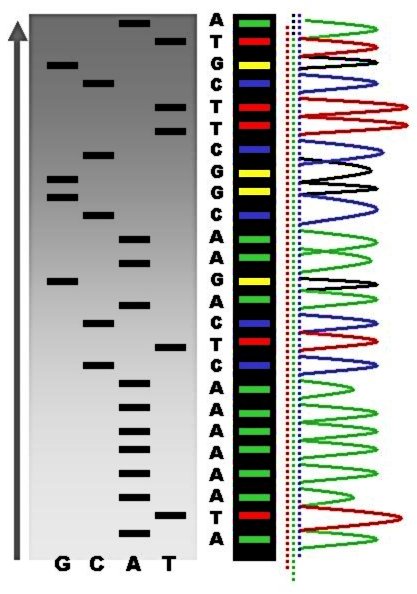|
Apples
An apple is a round, edible fruit produced by an apple tree (''Malus'' spp.). Fruit trees of the orchard or domestic apple (''Malus domestica''), the most widely grown in the genus, are agriculture, cultivated worldwide. The tree originated in Central Asia, where its wild ancestor, ''Malus sieversii'', is still found. Apples have been grown for thousands of years in Eurasia before they were introduced to North America by European colonization of the Americas, European colonists. Apples have cultural significance in many mythological, mythologies (including Norse mythology, Norse and Greek mythology, Greek) and religions (such as Christianity in Europe). Apples grown from seeds tend to be very different from those of their parents, and the resultant fruit frequently lacks desired characteristics. For commercial purposes, including botanical evaluation, apple cultivars are propagated by clonal grafting onto rootstocks. Apple trees grown without rootstocks tend to be larger and ... [...More Info...] [...Related Items...] OR: [Wikipedia] [Google] [Baidu] |
List Of Apple Cultivars
Over 7,500 cultivars of the culinary or eating apple (''Malus domestica'') are known. Some are extremely important economically as Product (business), commercial products, though the vast majority are not suitable for mass production. In the following list, use for "eating" means that the fruit is consumed raw, rather than cooked. Cultivars used primarily for making cider are indicated. Those varieties marked have gained the Royal Horticultural Society's Award of Garden Merit. This list does not include the species and varieties of apples collectively known as crab apples, which are grown primarily for ornamental purposes, though they may be used to make jelly or compote. These are described under ''Malus''. Table of apples Abbreviations A B C D E F G H I J K L M N O P Q R S T U V W Y Z Cider apples Cider apples are a variety of apples that may be far too sour or bitter for fresh eating, but are used for making cider. Varie ... [...More Info...] [...Related Items...] OR: [Wikipedia] [Google] [Baidu] |
Cider
Cider ( ) is an alcoholic beverage made from the Fermented drink, fermented Apple juice, juice of apples. Cider is widely available in the United Kingdom (particularly in the West Country) and Ireland. The United Kingdom has the world's highest per capita consumption, as well as the largest cider-producing companies. Ciders from the South West of England are generally higher in alcoholic content. Cider is also popular in many Commonwealth of Nations, Commonwealth countries, such as India, South Africa, Canada, Australia, New Zealand, and New England. As well as the UK and its former colonies, cider is popular in Portugal (mainly in Entre-Douro-e-Minho Province, Minho and Madeira), France (particularly Normandy and Brittany), northern Italy (specifically Friuli), and northern Spain (specifically Asturias and Basque Country (greater region), Basque Country). Germany also has its own types of cider with Rhineland-Palatinate and Hesse producing a particularly tart version known as A ... [...More Info...] [...Related Items...] OR: [Wikipedia] [Google] [Baidu] |
Cooking Apple
A cooking apple or culinary apple is an apple that is used primarily for cooking, as opposed to a '' dessert apple'', which is eaten raw. Cooking apples are generally larger, and can be tarter than dessert varieties. Some varieties have a firm flesh that does not break down much when cooked. Culinary varieties with a high acid content produce froth when cooked, which is desirable for some recipes. Britain grows a large range of apples specifically for cooking. Worldwide, dual-purpose varieties (for both cooking and eating raw) are more widely grown. There are many apples that have been cultivated to have the firmness and tartness desired for cooking. Yet each variety of apple has unique qualities and categories such as "cooking" or "eating" are suggestive, rather than exact. How an apple will perform once cooked is tested by simmering a half inch wedge in water until tender, then prodding to see if its shape is intact. The apple can then be tasted to see how its flavour ha ... [...More Info...] [...Related Items...] OR: [Wikipedia] [Google] [Baidu] |
Malus Sieversii
''Malus sieversii'' is a wild apple. According to DNA analysis conducted in 2010, it is the primary ancestor of the domesticated apple, '' M. domestica''. Native to Central Asia, ''M. sieversii'' prefers warm and damp habitats. Its conservation status is vulnerable. Description It is a deciduous tree growing , very similar in appearance to the domestic apple. Its pollen grains vary in size and are seen to be ovular when dry and spherical when swelled with water. Its fruit is the largest of any species of ''Malus'' except ''domestica'', up to 7 cm in diameter, equal in size to many modern apple cultivars. Unlike domesticated varieties, its leaves go red in autumn: 62% of the trees in the wild do this compared to only 2.8% of the regular apple plant or the 2,170 English cultivated varieties. ''M. sieversii'' has the capability to reproduce vegetatively as they form root suckers, or basal shoots. The clonal individual grows from the adventitious bud on the root, wit ... [...More Info...] [...Related Items...] OR: [Wikipedia] [Google] [Baidu] |
Malus
''Malus'' ( or ) is a genus of about 32–57 species of small deciduous trees or shrubs in the family Rosaceae, including the domesticated orchard apple, crab apples (sometimes known in North America as crabapples) and wild apples. The genus is native plant, native to the temperate zone of the Northern Hemisphere. Description Apple trees are typically tall at maturity, with a dense, twiggy crown. The Leaf , leaves are long, alternate, simple, with a serrated margin. The flowers are borne in corymbs, and have five petals, which may be white, pink, or red, and are Plant reproductive morphology, perfect, with usually red stamens that produce copious pollen, and a Ovary (botany)#Half-inferior_ovary, half-inferior ovary; flowering occurs in the spring after 50–80 growing degree-days, varying greatly according to subspecies and cultivar. Many apples require Pollination#Mechanism, cross-pollination between individuals by insects (typically bees, which freely visit the flowers for ... [...More Info...] [...Related Items...] OR: [Wikipedia] [Google] [Baidu] |
Cripps Pink
Cripps Pink is a cultivar of apple. It is one of several cultivars sold under the Trademark, trademark name . It was originally bred by John Cripps (horticulturalist), John Cripps at the Western Australia Department of Agriculture (Western Australia), Department of Agriculture (Stoneville Research Station), by crossing the Australian apple Lady Williams (apple), Lady Williams with the American Golden Delicious; the result is a combination of the firm, long-storing property of Lady Williams with the sweetness and lack of List of apple diseases#Miscellaneous_diseases_and_disorders, storage scald of Golden Delicious. Registered trademark Cripps Pink is owned and licensed by the Department of Agriculture and Food (Western Australia), Department of Agriculture and Food, Western Australia (DAFWA), which has plant breeders' rights in multiple countries. The peak industry body for Australian apple and pear growers – Apple and Pear Australia Limited (APAL) – owns and manages within t ... [...More Info...] [...Related Items...] OR: [Wikipedia] [Google] [Baidu] |
Apple Cider
Apple cider (also called sweet cider, soft cider, or simply cider) is the name used in the United States and Canada for an unfiltered, unsweetened, non-alcoholic beverage made from apples. Though typically referred to simply as "cider" in North America, it is not to be confused with the alcoholic beverage known as cider in other places, which is called "hard cider" in the US. Outside of the United States and Canada, it is commonly referred to as cloudy apple juice to distinguish it from clearer, filtered apple juice and hard cider. Fresh liquid cider is extracted from the whole apple itself, including the apple core, trimmings from apples, and oddly sized or shaped “imperfect” apples, or apple culls. Fresh cider is opaque due to fine apple particles in suspension and generally tangier than commercially cooked and filtered apple juice, but this depends somewhat on the variety of apples used. Cider is sometimes pasteurization, pasteurized or exposed to UV light to kill bacteri ... [...More Info...] [...Related Items...] OR: [Wikipedia] [Google] [Baidu] |
Organic Farming
Organic farming, also known as organic agriculture or ecological farming or biological farming,Labelling, article 30 o''Regulation (EU) 2018/848 of the European Parliament and of the Council of 30 May 2024 on organic production and labelling of organic products and repealing Council Regulation (EC) No 834/2007.''/ref> is an agricultural system that emphasizes the use of naturally occurring, non-synthetic inputs, such as compost manure, green manure, and bone meal and places emphasis on techniques such as crop rotation, companion planting, and mixed cropping. Biological pest control methods such as the fostering of insect predators are also encouraged. Organic agriculture can be defined as "an integrated farming system that strives for sustainability, the enhancement of soil fertility and biological diversity while, with rare exceptions, prohibiting synthetic pesticides, antibiotics, synthetic fertilizers, genetically modified organisms, and growth hormones". It originate ... [...More Info...] [...Related Items...] OR: [Wikipedia] [Google] [Baidu] |
Grafting
Grafting or graftage is a horticulture, horticultural technique whereby tissues of plants are joined so as to continue their growth together. The upper part of the combined plant is called the scion () while the lower part is called the rootstock. The success of this joining requires that the vascular tissues grow together. The natural equivalent of this process is inosculation. The technique is most commonly used in asexual reproduction, asexual plant propagation, propagation of commercially grown plants for the horticultural and agricultural trades. The scion is typically joined to the rootstock at the soil line; however, top work grafting may occur far above this line, leaving an understock consisting of the lower part of the trunk and the root system. In most cases, the stock or rootstock is selected for its roots and the scion is selected for its Plant stem, stems, Leaf, leaves, flowers, or fruits. The scion contains the desired genes to be duplicated in future production ... [...More Info...] [...Related Items...] OR: [Wikipedia] [Google] [Baidu] |
Seed
In botany, a seed is a plant structure containing an embryo and stored nutrients in a protective coat called a ''testa''. More generally, the term "seed" means anything that can be Sowing, sown, which may include seed and husk or tuber. Seeds are the product of the ripened ovule, after the embryo sac is fertilization, fertilized by Pollen, sperm from pollen, forming a zygote. The embryo within a seed develops from the zygote and grows within the mother plant to a certain size before growth is halted. The formation of the seed is the defining part of the process of reproduction in seed plants (spermatophytes). Other plants such as ferns, mosses and marchantiophyta, liverworts, do not have seeds and use water-dependent means to propagate themselves. Seed plants now dominate biological Ecological niche, niches on land, from forests to grasslands both in hot and cold climates. In the flowering plants, the ovary ripens into a fruit which contains the seed and serves to disseminate ... [...More Info...] [...Related Items...] OR: [Wikipedia] [Google] [Baidu] |
Old English
Old English ( or , or ), or Anglo-Saxon, is the earliest recorded form of the English language, spoken in England and southern and eastern Scotland in the Early Middle Ages. It developed from the languages brought to Great Britain by Anglo-Saxon settlers in the mid-5th century, and the first Old English literature dates from the mid-7th century. After the Norman Conquest of 1066, English was replaced for several centuries by Anglo-Norman language, Anglo-Norman (a langues d'oïl, type of French) as the language of the upper classes. This is regarded as marking the end of the Old English era, since during the subsequent period the English language was heavily influenced by Anglo-Norman, developing into what is now known as Middle English in England and Early Scots in Scotland. Old English developed from a set of Anglo-Frisian or Ingvaeonic dialects originally spoken by Germanic tribes traditionally known as the Angles (tribe), Angles, Saxons and Jutes. As the Germanic settlers ... [...More Info...] [...Related Items...] OR: [Wikipedia] [Google] [Baidu] |
DNA Sequencing
DNA sequencing is the process of determining the nucleic acid sequence – the order of nucleotides in DNA. It includes any method or technology that is used to determine the order of the four bases: adenine, thymine, cytosine, and guanine. The advent of rapid DNA sequencing methods has greatly accelerated biological and medical research and discovery. Knowledge of DNA sequences has become indispensable for basic biological research, Genographic Project, DNA Genographic Projects and in numerous applied fields such as medical diagnosis, biotechnology, forensic biology, virology and biological systematics. Comparing healthy and mutated DNA sequences can diagnose different diseases including various cancers, characterize antibody repertoire, and can be used to guide patient treatment. Having a quick way to sequence DNA allows for faster and more individualized medical care to be administered, and for more organisms to be identified and cataloged. The rapid advancements in DNA seque ... [...More Info...] [...Related Items...] OR: [Wikipedia] [Google] [Baidu] |






